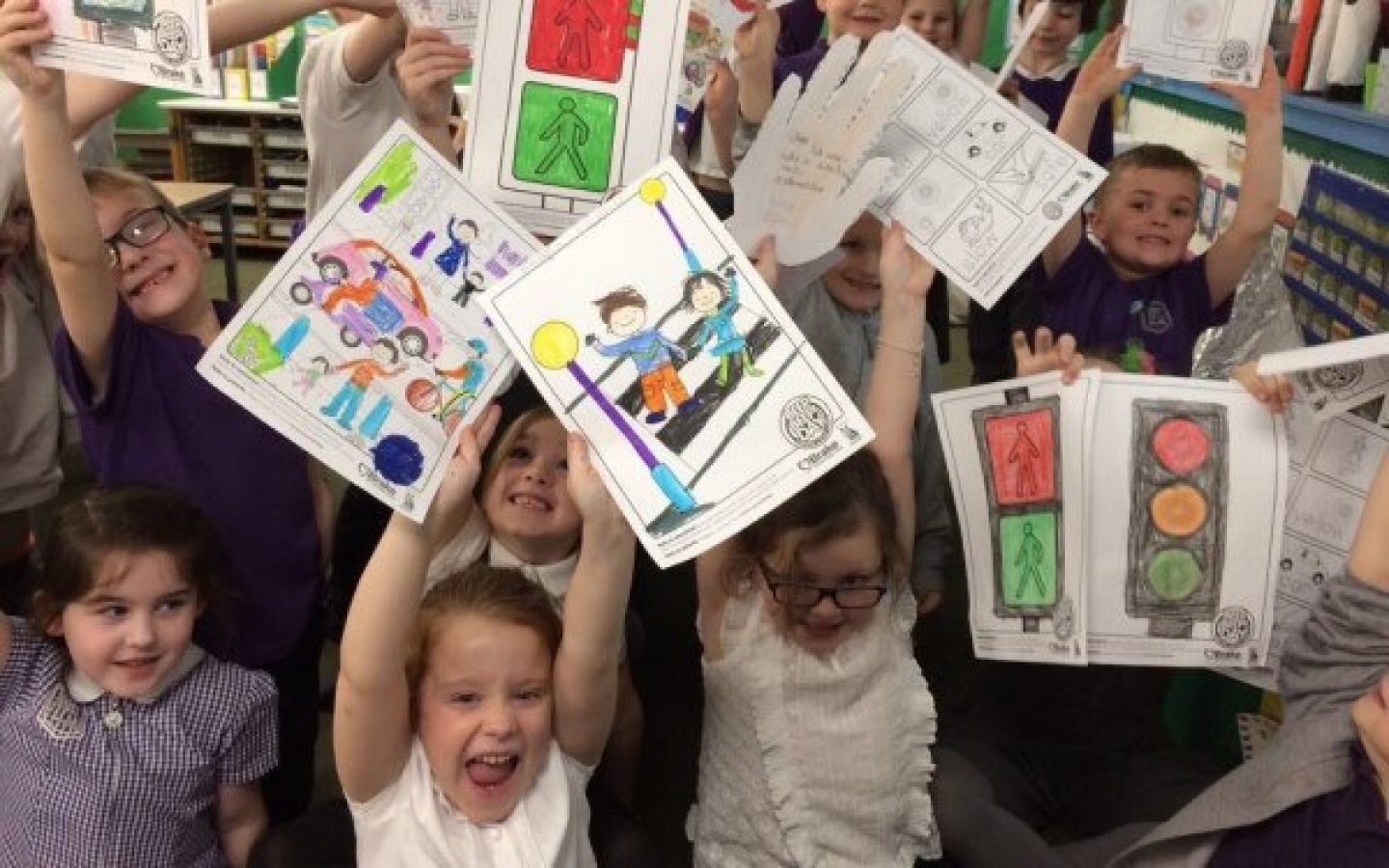Teaching road safety to children and young people is vitally important. Children’s health and lifestyles are often heavily influenced by their family’s travel choices and local road safety. Danger from traffic plays a big part in whether they can walk and cycle to school, to the park or to see their friends. It affects their ability to be healthy and socially active.
This guide will help you teach important road safety lessons to children and young people of all ages and abilities in an interesting and engaging way. It includes links to lessons and activities that can be delivered in Personal Social, Health and Economic Education (PSHE) and Citizenship lessons, assemblies and form time, as well as during curriculum-based subjects like English, Maths, Science and Drama.
This guide may also help inform discussions about how your school council could take action to improve road safety in your community.
There is currently no UK-wide, statutory requirement for schools to teach about road safety or safe and healthy mobility. These subjects are mainly taught within PSHE and Citizenship lessons. The guidance on what to teach in each phase of learning gives links to curriculum goals or related content.
Let's talk about road safety
- Avoid the term accident. Road crashes are preventable tragedies – calling them 'accidents' understates the devastation they cause, implies they are inevitable and undermines messages about the ways in which they can be prevented. Use words like crash, collision or incident instead.
- Talk openly and honestly about the seriousness of road safety with children, and the tragic consequences of road death and injury.
- Talk about deaths and injuries that regularly occur on roads, and the impact these have.
- Don't glamorise driving or make assumptions about people’s circumstances. Not all families have a car, and not all young people are interested in learning to drive.
- Talk about how young drivers are at greater risk of being involved in a road crash.
- Make it clear that there are sustainable and active alternatives to car use, which are good for people and good for the planet.
- Remember that people’s experiences of traffic in urban and rural locations can be very different. Adapt your messaging and activities to suit your situation.
Safe journeys happen when we design our streets, roads and cycle paths so that the mistakes we make don’t result in death or serious injury.
Healthy journeys are important to help keep us active and happy. Choosing to walk or cycle shouldn’t put us at increased risk, and the air we breathe on these journeys should be clean too.
The solutions to create safe and healthy journeys are known and available to us now. We need to build more safe spaces for people who walk and cycle, and ensure that vehicles on our roads don’t pollute our air. We need safety technology in vehicles and safe speed limits on our roads too. This is known as the ‘safe systems’ approach to road safety.
Brake supports the safe systems approach to road safety and this is reflected in this guidance for educators and in the resources we provide for teaching road safety and safe and healthy mobility.
Find out more about the safe system approach to road safety
Get resources to help you teach the safe system approach to road safety
For parents, this means holding children’s hands when walking near roads, crossing road at safe places and always using a child seat when travelling by car.
For drivers and cyclists, this means pledging to drive and ride as safely as possible, and to influence family and friends’ behaviour as drivers too.
Get help from others
Learning about road safety in the classroom is most effective when combined with practical experiences and campaigning.
Here are some ways you can work with others to support your classroom teaching:
- road safety officers from local authorities can visit schools to run pedestrian and cycling training
- emergency services professionals can give talks in assemblies, or supervise and deliver practical, experience-based lessons or discussions.
- local companies may be able to provide funding to support your road safety work or volunteers to help supervise an activity, or help you promote a campaign led by the children (for example by providing space to display banners and posters).
Brake’s guidance for teaching road safety and the resources we provide to help you teach road safety are not designed to change the behaviour of children and young people around roads.
Instead we aim to help children and young people to:
- increase their awareness of key road safety issues
- understand road risk
- understand the impact of road death and serious injury – on individuals, families and the wider community.
We also aim to inspire them to:
- shout out for safe and healthy journeys where they live or support a national road safety campaign
- support the cause of safe and healthy mobility in other ways, for example by fundraising for a road safety charity
- develop life skills relevant to campaigning or communication
- support wider initiatives, for example the United Nations Sustainable Development Goals.
Developing a pragmatic approach to road safety and sustainable transport interventions
Get support after a road crash
Brake’s National Road Victim Service is available to anyone who is supporting someone bereaved or injured in a road crash.- World Health Organization (2018) Global status report on road safety 2018
- Department for Transport (2019) Reported road casualties Great Britain: 2018, Table RAS30002
- Brake (2017) Inspire, Inform, Engage: Developing a pragmatic approach to road safety and sustainable transport education interventions






